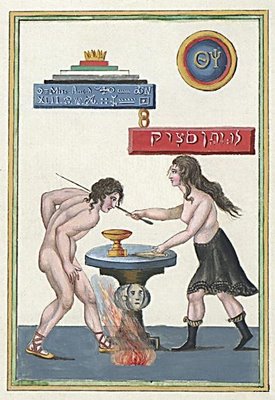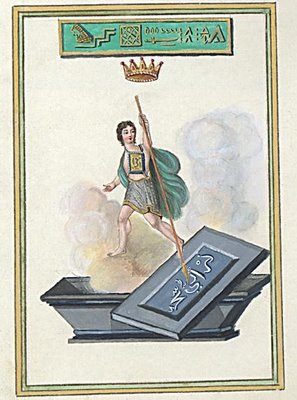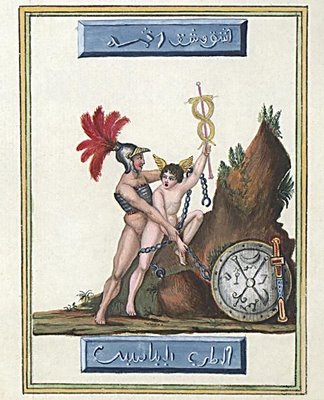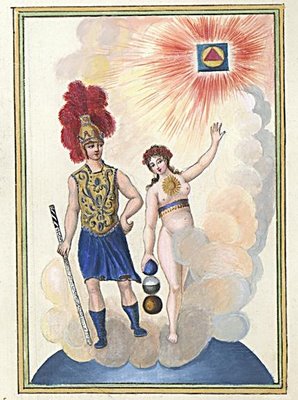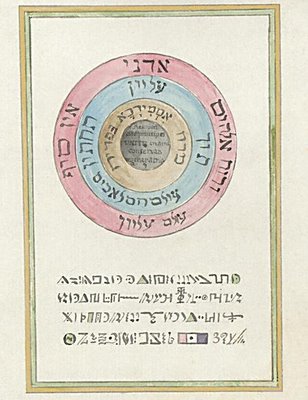Mass Action and Autonomous Action in the Election Year
An analysis of the successes and failures of recent militant demonstrations
Talking Tactics:
The Mass Action Model versus the Autonomous Action Model
In the past six years, the North American anarchist movement has gone through all the stages of a turbulent love affair with mass actions, including messy breakups and attempted reconciliations. In the process, some anarchists have taken up with other approaches to demonstration activism—including, most notably, an emphasis on more autonomous, decentralized actions. In this review of the past year’s demonstrations, we’ll discuss the strengths and weaknesses of both approaches, and analyze how these have played out in the streets.
In considering how to evaluate both mass and autonomous actions, we should begin by establishing what it is fair to expect of them. Most anarchists thoughtlessly describe them as direct action, but, technically speaking, demonstrations—even confrontational, militant ones, in which police are forced out of neighborhoods, corporate property is set afire, and bureaucratic summits are shut down—are not direct action. Making love, growing or stealing food, providing free child care—these are concrete actions that directly accomplish their goals. Militant demonstration tactics, on the other hand, may qualify as direct action to the extent to which they circumvent liberal or police control to make a point or create an atmosphere outside the dictates of the powers that be, but most anarchists who participate in them would argue that their primary purpose is to bring closer the abolition of the hierarchies and institutions against which they are staged, and viewed in this light they are generally more symbolic than direct.
This is not to say that they are never worthwhile. Even if a demonstration doesn’t serve to solve immediately the problem it is staged to address, it can contribute to this process by spreading awareness, raising morale, exerting pressure on those opposed, and providing useful experience for participants. Not even a whole city of smashed windows could suffice to stop any one multinational corporation from wrecking the ecosystem and exploiting workers; but if a broken window serves to focus attention on an issue and inspire others to mobilize themselves, it at least qualifies as highly effective indirect action.
The protests against the meeting of the World Trade Organization in Seattle in November 1999 remain the most popular example of effective mass action in our time. Though countless pundits have typed themselves blue in the face on the subject, it is possible that anarchists have not yet finished refining the lessons of Seattle regarding the advantages of the mass action model and the elements that must be in place for it to work. The very fact that no mass action since Seattle has been as successful should make it easier for us to evaluate what made it a success, now that we have plenty of experience with actions that lacked those qualities.
What worked in Seattle and the mass demonstrations that followed it? When they were effective, what exactly did they accomplish, and how?
First, it’s important to understand that, unlike every mass action that followed it, the protests in Seattle benefited from the element of surprise. The powers that be had no idea what they were in for, the police were correspondingly unprepared, and, just as significantly, the corporate media didn’t know better than to broadcast the news of the victory far and wide. When subsequent protests failed to succeed in actually halting summit meetings, decimating shopping districts, or receiving international news coverage, this should not have come as a shock: the forces of repression were thoroughly prepared for them, and capitalist media moguls had learned it was not in their best interest to advertise anti-capitalist resistance as effective and exciting.
All the same, even without the element of surprise, subsequent mass actions were effective in some ways. They brought attention to anarchist ideas and resistance, enabled radicals to gain experience in militant tactics that were impossible in other contexts, and continued to build momentum and connections in insurgent communities.
The chief strengths of mass actions are due to the opportunities accorded by the concentration of many radicals and activists in one space. When a broad range of groups who regularly employ different tactics to address different issues come together, all can benefit from the ways their different approaches complement one another; not only this, but what they accomplish can easily be recognized as a part of a broad-ranging program, rather than a single-issue campaign. For radicals who are used to feeling like a powerless minority lost in a sea of apathy, the presence of many others of like minds can be intensely empowering. In large groups, people can inspire one another to find the courage and sense of entitlement necessary to act in ways they otherwise would not, and there is no shortage of potential comrades with whom to collaborate. When great numbers are present, radicals can plot large-scale strategies and achieve ambitious goals, and the achievement of these goals serves to attract future participants. So many beautiful people concentrated in one space can create a temporary real-life example of an anarchist society, something practically unimaginable for those who grew up in the sterile, colonized, hopeless environments of modern day capitalism.
The other really advantageous aspect of mass actions is that they are accessible and participatory. Because they can incorporate a wide range of tactics, they offer space for participants of a wide range of capabilities and comfort levels; and as they are announced openly and take place in public settings, people can join in without need of special social connections. Thus, they serve to create new connections between people and communities, and to provide points of entry for atomized individuals into a mass movement. Additionally, because so many people, both intentional participants and chance witnesses, experience them firsthand, news about mass actions spreads easily through word of mouth and other non-corporate channels. This makes it difficult for the corporate media to ignore them entirely without risking a loss of popular credibility.
The limitations of the mass action model also became clearer and clearer as the years passed after Seattle. Organizing events on such a large scale, not to mention traveling to them from a great distance, demands a lot of energy and resources, which must be drawn from the same pool of energy and resources upon which ongoing and locally-based projects depend. If a demonstration results in mass arrests, as the less militant civil-disobedience-oriented mass action models are wont to, this can consume time, money, and attention that might be more profitably applied to some constructive end; the same goes for the felony charges and arduous court cases that can result from individual arrests at more militant actions. The connections made at mass actions are more often between spatially distant, culturally homogenous communities than between local, culturally dissimilar ones that could benefit from continuing to work together outside the mass action format. It has been charged that, though they demand a lot of organizing from those in the host city, mass actions often drain more from local communities than they give to them. More insidiously, because the mass action model focuses on exceptional events that largely take place in well-known cities, it can foster the unhealthy impression that history is determined at special occasions in Washington, DC rather than in the decisions people everywhere make in their daily lives.
Because each mass action demands so much from so many, organizers who seek to put on major demonstrations must compete with one another for the privilege of getting to stage one of the few that can happen in any given period; under these conditions, it is easy for authoritarians to seize the reigns, or sabotage the labors of many with a few bad decisions. Because traveling great distances to events and risking arrest is not feasible for people of many walks of life, the mass action model has been criticized as the domain of privileged activists; this does not necessarily undercut the possibility that it can achieve worthwhile goals, but it does indicate certain limits to its effectiveness as outreach and as a participatory form of resistance.
Finally, and most significantly in the post-9/11 era, the mass action model enables authorities to prepare extensively, making every demonstration into a spectacle of their intimidating might. This gives the misleading impression that people are powerless in the grip of an all-powerful government, when in fact the state must draw troops from far and wide to stage these shows of force. It is especially convenient for intelligence-gathering departments to have so many radicals concentrated in one place, working on one project. Working publicly, in great numbers and under constant surveillance, it is very difficult for radicals to disseminate new tactical ideas without infiltrators and police apprehending them.
Knowing these limitations all too well, but not wishing to retire into inactivity, some activists argue in favor of more decentralized, autonomous actions. Generally speaking, an autonomous action is an action on a small enough scale that it can be organized without coordination from a central body, below the radar of the authorities. A classic modern day example of autonomous action is an attack on an army recruiting station, in which its windows are broken and slogans are spraypainted across its walls. Throughout this discussion, we will be addressing three basic kinds of autonomous action: actions carried out by individuals or individual affinity groups that take place entirely apart from mass actions; actions carried out by individuals or affinity groups that coincide with mass actions; and larger mobilizations, such as impromptu street marches, that are organized and initiated autonomously by small groups.
The autonomous action model has many advantages that mass actions lack: such actions almost always benefit from the element of surprise, they require significantly less infrastructure and preparation, and those who organize them can choose the time and terrain of engagement, rather than simply reacting to the decisions of the authorities. Autonomous actions are perfect for those with limited resources who do not desire to act in a high profile manner. They are practical and efficient for striking small blows and maintaining pressure on a broad range of fronts, and provide an excellent learning opportunity for small groups who wish to build up experience together.
In choosing to focus on this model, however, activists should also take into account the ways in which its advantages are also limitations. It is easy to maintain secrecy in preparing for an autonomous action, but it is often correspondingly difficult to spread word of it afterwards—let alone carry it out in a manner that offers those outside the immediate circle of organizers the chance to join in. While the autonomous action model is useful for those already involved in the direct action movement, it is rarely useful for helping others get involved or develop more experience. Without participatory, accessible forms of resistance, a movement cannot be expected to grow.
The essential idea of autonomous action—that individuals can organize their own activity, without need of direction or superstructure—is also the essence of anarchism. The problem here is that the essential challenge of spreading the autonomous action model is also the essential challenge of the anarchist revolution: most people are not used to acting on their own—without direction, organization, and the energy and sense of urgency that special events and large numbers of comrades provide, many find it difficult to cross over from hesitation into action. Even for those who hope to act autonomously, mass actions provide momentum, morale, crowd cover, legal support, numbers, media attention, and many other important elements. Outside the mass action model, we have to figure out how to do without these, or provide for them some other way.
Focusing on autonomous actions is a strategic retreat for radicals if it means dropping out of the public eye. Merely material blows, such as financial losses to corporations, will not suffice to topple the powers that be, at least at this juncture in the struggle; the hurricanes that struck the southeastern USA in the summer of 2004 did literally tens of thousands of times the financial damage of all the direct actions carried out that year combined, without posing any threat to the stability of the capitalist order. What is truly dangerous about anticapitalist resistance is not the actual effects of any given action, but the danger that it might become contagious and spread ; and for this to be possible, people have to hear about resistance, and know how to join in. Too often, autonomous actions that are prepared and carried out in secret depend entirely on the media to publicize them. With the corporate media determined to limit coverage of direct action and independent media struggling to reach any audience beyond a few subcultural ghettos, this can be a serious flaw.
Even when they do attract attention, autonomous actions do not necessarily mobilize others. In the worst case, a direct action movement oriented around the autonomous actions of a dynamic few can degenerate into a sort of spectator sport. This is one of the many reasons most anarchists reject terrorism and other approaches that depend on the actions of a vanguard: for an action model to stand a chance of being useful in the project of revolutionary struggle, it must be possible for others to adopt and apply it themselves—indeed, it must promote and encourage this, it must seduce people into using it who might otherwise remain inactive.
Finally, while mass actions by their very nature involve and benefit from large-scale coordination, it is more difficult to coordinate effective decentralized actions. Clearly, as the past few years have shown, it’s not sufficient for some lone maniac to issue a “call for autonomous actions” for them to take place everywhere—or, and this might be even worse news, if they have been taking place everywhere, it doesn’t seem to have made any discernable difference. We need a model for autonomous actions that actually enables them to take place, and to be effective when they do. In the discussion that follows, we’ll analyze the lessons of the past year’s attempts to develop such a model.
In considering these issues, it’s important to emphasize that neither mass actions nor autonomous actions represent the only possible form of radical activity—they don’t, and shouldn’t, represent even the primary one. If a total moratorium on both could enable an accordingly greater focus on other activities such as the development of community infrastructure and alliances, it might be for the best for the anarchist movement; some have argued in favor of just that. If we continue to invest energy in demonstrations of any kind, it should be because they can, as part of a broader strategy, enable us to make gains on other fronts as well; this author, for one, feels strongly that this can be the case.
Background:
Direct Action at Demonstrations from the 1990’s to 2004
Watershed events like the aforementioned protests in Seattle don’t just come out of nowhere. Throughout the apparently quiet 1990’s, direct action groups like Earth First! and Anti-Racist Action were acting on a smaller scale, building up experience and momentum, while previously apathetic milieus like the punk rock scene and college activism were politicized by lifestyle politics and the anti-sweatshop campaign, respectively. Once Britain’s successes with the Reclaim the Streets model demonstrated that mass anti-capitalist action was still possible in the post-modern era, it was only a few months before activists tried to do something similar in the USA at the meeting of the World Trade Organization.
The results surprised everybody. Suddenly, everyone had a working example of anti-authoritarian, anti-capitalist resistance as a reference point. Anarchists, among other radicals, came out of the woodwork, and everyone was itching to have a go at repeating that success. Because the Seattle protests had not been a mere fluke but rather the culmination of a long period of growth and development, there was a root structure in place to sustain further such actions—the most notable being the protests against the World Bank and International Monetary Fund in Washington, D.C. the following April, against the Democratic and Republican National Conventions that summer, and against the Free Trade Area of the Americas summit in Quebec in April 2001. And because each demonstration attracted new attention and additional participants to the anarchist movement, the root structure quickly deepened and spread. The movement, focusing much of its energy on these convergences and mass actions, rode a wave that sometimes made it appear to be an unstoppable historical force.
By summer of 2001, when great numbers of people participated in streetfighting at the G8 summit in Italy and planning was underway for more protests against the IMF in Washington, DC, some felt that the movement had reached the crest of that wave. Many were exhausted from the demands of constant organizing, long-distance traveling, and court cases; at least as many felt that the anarchist movement was on the verge of a breakthrough that would change the nature of resistance in North America. We’ll never know whether or not the effectiveness of mass mobilizations had already reached its peak, for before the planned protests in DC could take place, hijackers flew airplanes into the World Trade Center and the Pentagon, and the entire context changed. The anarchist response to the new situation was, for the most part, embarrassing: rather than seizing the opportunity to emphasize that now even U.S. citizens were dying as a result of their rulers’ foreign policies, many hesitated to speak out in fear that they would be attacked or seen as insensitive, and thus ceded all the gains made by anarchists over the preceding years. Fears ran rampant that new anti-terror legislation and enforcement would be used to imprison and suppress the anarchist movement, a concern that has since been shown to be unfounded . Now that most activists did not believe that positive revolutionary change could be around the corner, all the internal conflicts and burnout that had been building up over the preceding years of constant action came to the fore, and over the following months anarchist communities saw the worst infighting in recent history.
In retrospect, it is possible to argue that mainstream media attention was responsible for a significant part of the high morale and sense of entitlement that enabled anarchists to act so effectively in the period between the Seattle demonstrations and the 9/11 attacks. Few if any in the anarchist milieu have addressed this irony. In Western society, everyone is raised to desire, however secretly, to be famous—to be on television – because what is on television is “real,” is important. Although at the time many anarchists insisted they didn’t care whether or not they received coverage in the corporate media, it could be said that the simple knowledge that they were “famous” as a movement if not as individuals sustained their spirits and sense of urgency. When this attention was withdrawn, morale plummeted immediately. The corporate media is unlikely to return the spotlight to anarchist activity in the foreseeable future, and the motivation of anarchists should not be dependent upon other’s representations of them in the first place. Anarchists now must find ways to maintain momentum and energy even through a total media blackout.
As the anarchist movement struggled to regain its footing throughout the year following the 9/11 attacks, some tentative attempts were made to apply the mass action model again, notably at the protests against the World Economic Forum in New York City and then at the “People’s Strike” protests against the IMF in DC a year after the terrorist attacks. These were admirable efforts, and if nothing else they served to give those seriously committed to demonstration activism a way to stay involved, but they showed that for the most part the large numbers and high morale previously associated with large mobilizations were no longer available. Older activists were demoralized, younger ones were unsure how to proceed, and people on the fringes of activism and radical politics were too distracted by the spectator sport of the so-called War on Terror to refocus on the struggle against capitalist globalization on other fronts.
When the Terror War shifted into a new gear, demonstrations became popular again, but anarchists were no longer in the forefront of the organizing. Liberal and authoritarian groups attempted to appropriate all the mystique radicals had recently given mass action, while only taking on the superficial aspects of the organizing models that had made protests before 9/11 exciting, participatory, and thus dangerous to the established order. The first two major demonstrations to protest the impending war in Iraq, in DC on January 20 and then worldwide on February 15, were dominated by liberal single-issue politics and models. The protests in New York City on February 15 became a little more raucous when the police attempted to block the march and rank-and-file protesters fought back, but for the most part consciously radical militant tactics seemed a thing of the past at mass actions . This was all the more disappointing in that the February 15 protests were perhaps the most heavily attended protests in history; because militant activists had surrendered the mass action context, millions of people marching in the streets neither helped to sway the opinions of the masters of war nor to obstruct their preparations for it—nor, for that matter, to build a movement capable of disarming them.
Things changed when the United States attacked Iraq on March 20, 2003. On this day, and over the months that followed it, countless cities were struck by demonstrations that went beyond the limits liberal organizers try to impose. San Francisco was entirely paralyzed; more importantly, radical communities appeared in more surprising locations such as Saint Louis, Missouri, conceiving and carrying out their own disruptive actions as the militant core of the anti-war movement. A new generation of activists, many of whom had not participated in the post-Seattle phase of demonstration activism, gained experience during this time.
As that phase of the war in Iraq died down, activists also slowed the pace of their activity, taking time to recover from such a demanding period of organizing. Anarchists nationwide began to focus their attention on the Free Trade Area of the Americas ministerial that was to take place in Miami the following November. Many believed that, thanks to the new momentum generated in the anti-war movement, this could be the first really effective, exciting demonstration against capitalist globalization since September 11; some hoped this would be the triumphant return of Seattle-style protest activism. Consultas were held around the country at which plans were hashed out, posters were designed and distributed, groups disseminated calls for various forms of action.
Unfortunately, Miami was a poorly chosen playing field for this grudge match. It was the most militarized police state North America had ever seen: there were so many police, equipped with so much destructive weaponry, that any kind of militant confrontation would have been doomed to failure. The protestor turnout was bound to be limited: the majority of potential participants were still distracted by the Iraq war, not thinking about corporate globalization, and Miami was a great distance from most active communities. Consequently, there wasn’t a wide range of diversity among the protestors, which can otherwise temper police repression: this made it easy for the police to pigeonhole protesters as either law-abiding union members or unruly anarchists, so as to ignore the former and attack the latter.
These factors alone might not have spelled doom for the protests, but there were also several strategic errors in the organizing. The plan organizers put forth, to attack the fence surrounding the meetings, was exactly what the authorities expected —and while the latter were thoroughly prepared for this scenario, few activists arrived mentally or physically equipped to undertake this. Even worse, certain organizers cut an unbelievably foolish deal with the labor unions—which, it must be noted, were closely collaborating with the police—to the effect that no direct action would take place during the permitted union march on the afternoon of the primary day of demonstrations. Thanks to this agreement, the police were free simply to maintain order during the union march, with little fear of having to divide their attention; then, as soon as the march was over, they steamrolled across the entire city, beating, gassing, shooting, and arresting everyone who remained, confident that everyone they attacked was acting outside the law and therefore a safe target. The only way anarchists could have turned the tables would have been by acting unexpectedly and en masse outside the occupied district of Miami, but the initiative necessary for that kind of autonomous, covert organizing was painfully lacking. The consulta model, while it indicated an admirable commitment to decentralized organizing, failed to provide intelligent strategic decisions, adequate security for planning, or commitments on which participating groups actually followed through. These may all have been incidental failures, but each one cost dearly.
This is not to say nothing of value was accomplished in Miami. People still came together and acted courageously, with all the benefits that entails, and the police state was revealed for what it was, at least to eyewitnesses and through the few venues that ran coverage of the events. But coming away from a protest with a martyr’s tale of police violence and abuse, or, at best, a story of heroic narrow escapes, is a poor second to actually feeling like one has struck blows and made gains.
In the wake of what many felt to be a debacle, some anarchists began to emphasize the importance of acting outside mass models in smaller, more autonomous groups with the element of surprise. Some had been promoting this idea for a long time; it had even been tested to some extent in mass actions, such as at the People’s Strike in Washington, DC, September 2002, when the organizers distributed a list of targets and intersections and announced that actions would take place throughout the city. Others, notably environmental and animal liberation activists, had been acting in clandestine cells for decades. So it happened that, as the election year approached, the war in Iraq wore on, and political matters came back to the fore of public attention, anarchists were preoccupied with the question of whether mass actions could ever be effective again, and what forms of decentralized action might be able to replace them.
Direct Action in the Election Year
The year 2004 was ushered in by a midnight march in downtown Washington, DC, commemorating the ten year anniversary of the Zapatista uprising in Chiapas, Mexico. More than one hundred masked anarchists bearing banners, torches, and percussion instruments took over a major thoroughfare for a full hour, leaving spraypaint and stencil designs in their wake. This march appeared as if out of nowhere in a crowded business district, on a night when the police department was so overextended that it took over a half hour for even one patrol car to show up. There were no arrests. Clearly, some anarchists had learned the lessons of Miami, without withdrawing from public actions altogether.
All the same, the first months of 2004 were quiet ones for direct action. March 20th, the anniversary of the declaration of war on Iraq, saw largely peaceful mass demonstrations along the lines of those before the war, lacking the urgency and militancy of the actions carried out during it. In April, there was another protest in Washington, DC against the IMF and World Bank; the extent to which it was a ritualized, placid affair revealed just how far anarchist attention had drifted from the formerly prioritized terrain of mass actions opposing corporate globalization. It was followed immediately by the March for Women’s Lives, a rally in support of abortion rights that drew over a million people. Although there were hundreds of anarchists present, if not more, the possibility that militant action of any kind might take place was never broached. People of militant perspectives were still coming together when liberal organizers solicited their participation, but without a sense that it was feasible to organize events on their own terms.
This impression was sealed by the G8 summit in Georgia that June. The protests at the G8 summit in Genoa, Italy in the summer of 2001 had been the high water mark of the anti-globalization movement: hundreds of thousands of protesters had converged on the city, engaging in tactics of all kinds that had left entire financial districts in wreckage. Eager to avoid another such catastrophe, the powers that be picked a secluded island off the coast of Georgia to host the G8 meeting in June of 2004, and set aside tens of millions of dollars for security. Not only the island itself but much of the coastline around it was thoroughly militarized; as has become customary, the media ran a series of articles demonizing predicted anarchist protestors while emphasizing the invincibility of the police and military forces that would be waiting for them.
Demoralized by the Miami experience, most advocates of direct action assumed from the outset that nothing would be possible in Georgia. In retrospect, it was wise to let the G8 summit pass rather than squandering the last optimism of the movement on a doomed venture, though at the time this resignation seemed to be a troubling symptom of general cynicism. Many brushed off mass actions as obsolete; in the end, there was only one protestor for every sixty-seven security officers at the G8 summit. Much of the energy of those few who did take the trouble to go to Georgia was invested in the “Fix Shit Up” campaign, in which anarchists provided volunteer labor supporting disadvantaged families in the areas of police occupation. The name of this venture, which could neither successfully solicit media coverage nor appeal to liberal sympathies nor inspire the punk rockers whose slogan it referenced, speaks volumes as to its long-term effectiveness as an insurrectionary strategy. When no actual blows can be struck against the system that creates and enforces poverty, anarchists should at least do what they can to alleviate its effects—but many anarchists are already doing this where they live, and traveling long distances to do so has all the disadvantages of traveling to carry out more militant actions without most of the advantages. In every aspect, the G8 summit was the nadir of the general slump through which mass action activism passed following 9/11, notwithstanding the renaissance during the Iraq war.
Some had called for widespread autonomous actions around the country to coincide with the G8 summit. A little-known example of one such call was the “Insurrection Night” proposal, which was circulated via email listservs. In incendiary language, it called for people everywhere to carry out militant, confrontational direct actions the Saturday night preceding the week of the G8 summit. The advantages of this approach over going to Georgia to get tear-gassed and arrested in the middle of nowhere were obvious: it allowed radicals to plan their actions in familiar, unguarded terrain and with the benefit of surprise. On the night so designated, however, nothing happened—or if anything did, news of it was never circulated. If all it took to get people to rise up and strike blows against the apparatus of control was to issue a call to action, this revolution would have been over a long time ago; and even if such calls were to work, it seems clear that the system can survive a burning dumpster here and there—the problem is how to concentrate such blows, and strike them in such a way that they give rise to wider uprisings. From this example, one can surmise that both calls for autonomous action and autonomous actions themselves must proceed from an already thriving culture of resistance if they are to offer any results —and neither, alone, are sufficient to give rise to such a culture. If the G8 summit in Georgia was the nadir for mass action, the “Insurrection Night” prototype represents the weakest version of the autonomous action model.
A few days after the proposed night of insurrection, on the final day of the G8 summit, activists in North Carolina shut down an entire corporate business district with steel cables, smoke bombs, and banners decrying the G8 and corporate power in general, causing a massive traffic jam in the center of the state. Local newspapers and television gave this more coverage than they gave the protests in Georgia against the G8 summit, and local residents experienced it far more immediately. This took place only two days before a public outreach event, the “Really Really Free Market,” in the state capital, at which people gathered to share resources and entertainment freely. As a result of the direct action that preceded it, the police and media both paid a great deal of attention to this event: the nightly news showed hundreds of people happily dancing, eating, and exchanging gifts, while police helicopters circled overhead and a hundred riot police waited nearby. Thus, this combination of tactics resulted in free publicity for the effectiveness of covert action, the munificence of community activism, and the heavy-handedness of the state. In contrast to the “Insurrection Night” prototype, this can be seen as an effective integration of autonomous action into a wider strategy for building radical communities and gaining widespread attention.
Another example of effective autonomous action occurred a month later in Maine, following an Earth First! gathering, when approximately 150 people converged on the Governor’s Mansion to protest a proposed liquid natural gas pipeline. First, a few activists erected a thirty-foot tripod with a protester locked atop it, blocking the driveway. Once this was accomplished and all but the police liaison and the woman on the tripod had escaped unseen, a small masked group arrived and took advantage of the distraction occasioned by the tripod to dump hundreds of pounds of foul lobster guts across the lawn. They disappeared as other protesters showed up with food, games, and other festive forms of entertainment, further confusing the slowly responding authorities. Two communiqués were delivered: one a serious one for the mainstream media, the other a hilarious statement on behalf of the “lobster liberation front” for activists and others with a sense of humor. The event helped keep opposition to the pipeline visible, gave those opposing it more bargaining power, and demonstrated an alternate model for autonomous actions.
The Maine action was organized in secrecy by a small circle of people who nonetheless managed to open it up to great numbers of participants; in this regard, it possessed many of the advantages of both the mass and autonomous action models. As the target was three hours’ drive distant from the gathering at which participants were recruited, and its identity was never openly revealed, the action retained the element of surprise. At the gathering, two preparatory meetings were held at which organizers described the general nature of the target and affinity groups formed to focus on different aspects of the action. The morning of the action, a caravan left the gathering; the bulk of the participants did not know where they were going until they were led onto the site. This negated the risk of informers being present.
This kind of organizing demands a careful balance of security and communication, for those invited must learn enough about the action to be excited about participating and equipped to do so effectively. This model requires a large number of people to place a high level of trust in a few individuals; thus, it often works best in tight-knit or culturally homogeneous communities. While it is not as accessible to broad ranges of people as the mass action model, it is more participatory than other forms of autonomous action, offering introductory roles for less experienced activists.
The events in North Carolina and Maine were only two of several local actions in mid-2004; but for radical activists and well-behaved citizens alike, the central political events of the summer were the Democratic and Republican National Conventions. At these, the possibilities and limitations of the anarchist movement’s preoccupation with autonomous actions were tested.
The Democratic National Convention took place in Boston at the end of July. It was not heavily attended by radicals; many were saving their time and energy for the Republican National Convention. Regardless of theoretical matters such as whether anti-authoritarians should focus on contesting the most powerful political party or all political parties, activists laying plans for mass actions must take into account practical questions such as how many people will actually show up. Perhaps if thousands of anarchists had converged on Boston to show their opposition to the false alternative represented by the Democratic Party, it would have made an important point, but this was not to be. As many learned in Miami, anarchists must always devise strategies that take into account the number of participants an event will draw and how much militancy can realistically be expected of them.
To get perspective on the protests at the Democratic National Convention, we can compare and contrast them with the People’s Strike protests against the International Monetary Fund in DC September 2002, with which they shared many features. Both protests were less attended than organizers hoped; both included calls for autonomous action, as well as organizing for more centralized, accessible events; both took place in cities that are known for having police that show restraint during protests. At each event, the main day of action featured a critical mass bicycle parade, a march, and decentralized actions around the periphery. Both protests were organized by explicitly anti-authoritarian groups that made media coverage an integral part of their strategy.
The organizers of the People’s Strike had emphasized the confrontational character of their action, declaring explicitly that the city would be shut down; the unapologetically militant tone of their rhetoric was one of the most salient features of that mobilization. Although it turned out that not enough militants, and not militant enough ones at that, turned out to follow through on this threat, the media and police accomplished it themselves by spreading hysteria in advance and clogging up the city in their attempts to defend it. After most of the actions planned had been accomplished, the police, still unnerved and always most likely to go after defenseless sitting targets, mass-arrested everyone present at a non-confrontational action in Pershing Park. This mass arrest, though somewhat inconvenient at the time, proved to be the most important legacy of the action: it ensured international media coverage for the protest, made the police look absurd, and ensnared the city in lawsuits that kept the demonstration in the news for years afterwards and forced the police to be more hesitant to make arrests during future protests.
By contrast, in Boston, the organizers—the “Bl(A)ck Tea Society”—were careful to distance themselves from violence, striving to offset the media campaign of extreme misinformation about anarchists that had become typical by that time . Presumably, they hoped that by doing so they could attract more participants; unfortunately, as the prevailing sentiment in liberal circles was that getting “anybody but Bush” elected president was the first priority, participation in protests against the Democratic Party was bound to be limited to radicals. The Boston organizers were also kept on edge by a campaign of police and FBI intimidation, but this never panned out into the raids and arrests they feared. The fact that there were so few arrests in Boston indicates that, however intimidating the police made certain to be before and during the event, they themselves hoped to avoid illegal raids and mass arrests that would draw more attention to the protests. Had the organizers figured this out in advance, they could have strategized accordingly.
Following the People’s Strike model, the organizers in Boston distributed a list of targets throughout the city suitable for autonomous action. However, in preparing the People’s Strike, the organizers had also covertly coordinated many actions, so as to be sure that something would happen—consequently, there were freeways shut down by burning tires, bank windows smashed, locks glued, and a major avenue barricaded by a giant inflatable, though many of these actions went unnoticed by the media or other activists because they took place over such a broad area. In Boston, the organizers don’t seem to have been as proactive, and neither, apparently, were many of the other activists who came to the protest—the most militant action of the event seems to have been an incident in which a dozen people turned over shelves in a Gap clothing store, leaving spraypaint in their wake.
Just as the “Insurrection Night” model failed to yield results, simply distributing a list of targets is hardly sufficient to enable militant action to occur. If they hope to see militant autonomous actions carried out to the extent that mass actions have been in the past, organizers must provide some of the prerequisites that enable people to apply militant tactics in the latter context. These include crowd cover, communications and scouting, media attention, and, above all, the reassurance that somebody somewhere has actually invested energy in making sure something will happen. The Bl(A)ck Tea Society attracted the necessary media attention; they provided a text messaging communications system, though it proved vulnerable to police surveillance, resulting in a few arrests after a botched attempt to assemble following the “Really Really Democratic Bazaar”; they seemed to have done little else to facilitate autonomous actions. This is not to disparage their organizing efforts—in addition to media and outreach work, they also organized a convergence center, prepared legal infrastructure, and staged a variant on the Really Really Free Market model that attracted thousands of participants. But if autonomous action is to rival mass action as a model for militant activity, anarchists have to learn that the “clap your hands if you believe in Tinkerbelle” approach, in which organizers call for decentralized actions and then cross their fingers and hope an army of maniacs will show up to plan and execute them, does not produce results.
The Democratic National Convention was not an opportune setting for a doomsday showdown with the forces of law and order, and it’s important that a movement limited in numbers and experience not overextend itself. Perhaps anarchists should have concentrated all their energy on accessible, non-confrontational approaches in Boston; it certainly doesn’t pay to make empty threats too many times. If effective militant action of any kind was to happen there, given the massive police presence and small numbers of protesters, it would have had to have been decentralized and autonomous: twenty such actions as happened at the Gap, for example, could have caught the police by surprise, generated media attention, and raised morale in anticipation of the Republican National Convention. Failing that, it would have been more sensible to focus on more outreach and community-building, in which the Boston protests were already superior to the People’s Strike. In trying to have it both ways by calling for militant action while neither preparing it nor tricking the police into making it unnecessary, the organizers played into the hands of the authorities, who hoped to show that they could easily thwart anarchist attempts at disruption. This had negative consequences for Boston locals as well as the anarchist movement. While the long-term effects of the “People’s Strike” were that local police became more hesitant in dealing with crowds, the millions of dollars of funding that the Boston police received to prepare for the convention paid for an arsenal of semi-lethal weapons—one of which was used to kill a woman during a post-game sports riot a few months later.
A month after the protests in Boston, the Republican National Convention was held in New York City. Unlike every other demonstration since the invasion of Iraq, this was a historic opportunity for anarchists to apply the mass action model effectively. All the necessary pieces were in place: the local populace was furious with the Republicans for invading their city, and enthusiastically supportive of the protesters; radicals were coming by the thousands from all around the country, hoping this would be the event of a lifetime; and there was to be a wide range of people involved in the protests and a great deal of media attention focused on them, both of which would help deter the police from a violent crackdown such as the one in Miami the preceding year. The attention of the whole world was concentrated on New York City, and while many liberals feared that a serious confrontation there would undermine the chances of the Democratic Party’s presidential hopeful, countless others longed for one.
If all that wasn’t enough, there was a struggle going on between the liberal organizers and the city police department as to whether the giant permitted march would be allowed to go to Central Park. This was the same situation that had precipitated the street confrontations during the anti-war protests in New York a year and a half earlier; if the city was unable to reach an agreement with the organizers in time, everyone knew that the march could turn violent. The leaders of the liberal organizing coalition backed down on their demands on one occasion, only to be forced by their grassroots membership to reinstate them. This conflict provided a perfect opportunity for anarchist organizing. A nationwide call for a black bloc on the day of the main permitted march would have taken perfect advantage of this conflict, giving those frustrated with the city government and its liberal accomplices a rallying point. Had the first major day of protests ended in streetfighting, it would have changed the entire character of the protests and perhaps of opposition to the Bush regime in general. The very last thing the police department of New York City wanted was to have to use tear gas in the crowded streets of the most populated city in North America; this would have been a public relations debacle for both the city government and the Republican Party, and it would have shown that anarchists could pose a real threat to the imposed domestic peace that enables wars overseas. Even if this had resulted in massive numbers of arrests, it could have been worth it—hundreds, if not more, of the anarchists who went to New York ended up getting arrested, anyway.
Alas, anarchists were so caught up in solving strategic problems from past actions that they failed to apprehend these possibilities. While a heavier focus on autonomous actions would have been the only hope of enabling effective militant tactics at the demonstrations in Miami and Boston, New York was a perfect setting for a large-scale, centrally organized strategy, and anarchists passed this chance up in favor of a focus on decentralized, autonomous actions. Perhaps older activists were still shell-shocked from the protests at the Republican National Convention in 2000, at which a poorly planned mass action had ended in a lot of pointless, demoralizing arrests; perhaps it was just too difficult to coordinate actions centrally between groups from around the world in such an enormous and complicated city; perhaps it really was the legacy of Miami frightening anarchists out of using their heads. Regardless, as the communiqué delivered weeks before the demonstrations by the NYC Anarchist Grapevine admitted, there was no “Big Plan” for militant action in New York.
Unfortunately, what anarchists fail to coordinate themselves will be coordinated by authoritarians, and so, while anarchist labor was central to the infrastructure that enabled them, the character of most of the actions planned for New York was non-confrontational, even liberal. At the last minute, the organizers of the main march finally accepted the conditions of the city, agreeing to march in circles rather than follow through on the desires of the rank-and-file who wanted to go to Central Park with or without a permit; likewise, though anarchists and militants swelled the numbers of many other actions, these were largely orchestrated to avoid actually challenging the activities of the Republicans or the occupation of the city.
To be fair, some anarchists, notably including many who had traveled from San Francisco and other parts of the West Coast, organized a day of direct action late in the protests, but they focused only on enabling symbolic tactics of civil disobedience. Worse, they made exactly the same mistake that had been made in Miami and at the Republican National Convention four years earlier: they arranged for their action not to coincide with any others and to take place after most of the less radical protesters had left the city, so the police had free hands to focus on repressing everyone on the streets that night. This resulted in over one thousand arrests, without any concrete objective being accomplished besides the news coverage these attracted and the harassment of some Republican delegates.
One of the most important lessons that can be drawn from the aforementioned action is the importance of different kinds of actions taking place simultaneously. In Seattle, Quebec, and Genoa, legal marches, civil disobedience, and confrontational militant action all took place at once, and the division of the city into zones according to level of risk made it possible for protesters to pick the form of engagement with which they were most comfortable. In the Republican National Conventions of both 2000 and 2004, as well as the FTAA protests in Miami, organizers did exactly the opposite, senselessly endangering those committed to militant action and undercutting the effectiveness of the protests as a whole. The costs of this could have been offset had militants organized a major mass action themselves, but none dared do so.
In the absence of a unified approach, the hundreds of different actions that took place in New York never quite added up to the insurrection they could have. As a demonstration of the possibilities of localized autonomous action, New York was unparalleled, but it was also a missed opportunity in an era that provides few good chances to apply the mass action model.
Two groups did attempt to organize actions on the day of the main march; ironically, one applied the mass action model as if carrying out an autonomous action, while the other did exactly the opposite. The former of these groups was a militant contingent, apparently organized by word of mouth, that took part in the main permitted march; this might be the first case on record of a black bloc going undercover by mixing with civilian protesters and leaving their faces uncovered until the moment before the action. When this group approached the point at which the march turned around to march away from Central Park, right in front of the building hosting the convention center, an enormous green dragon puppet was set afire, and streetfighting broke out; however, there were not enough numbers or preparation to maintain this. Within an hour, the police had reestablished control and the march proceeded as before; only a few impressive photographs of the fire remained, one of which ran in one especially poorly informed tabloid with a caption describing it as the work of “the anarchist group ‘Black Box’.”
The other notable militant effort that day was a call for anarchists to intercept Republican delegates on their way to their evening’s entertainment at several Broadway shows. However, because this call was promoted in such venues as the New York Times, these actions lacked the element of surprise, the most important aspect of the autonomous action model. Many anarchists showed up, but as there was no strategy for mass action and few participants brought individual plans of their own, there were many arrests and little more was accomplished than a few delegates being shouted at.
Whatever strategic miscalculations anarchists may have made, it was still thrilling to be in New York with so many others determined to change the course of history. The Critical Mass bicycle parade, which took place before most of the other events, offered a moving illustration of just how many people and how much energy were gathered together that week; to stand at a corner and watch groups of thirty and forty surge constantly past for a full half hour was simply breathtaking. Most who went to New York left with new energy and inspiration, which helped to catalyze further action as the elections drew near.
The election provided a matchless opportunity for nationwide autonomous actions. Unlike any summit or local issue, it happened everywhere at once, focusing public attention on a wide range of issues that could be addressed on a variety of fronts. Among others, a nationwide campaign on the theme “Don’t (Just) Vote, Get Active” urged people to take action on election day to demonstrate all the possibilities for political engagement beyond the voting booth.
The diversity and scope of the actions anarchists carried out around the election make it worth recounting some of them here. In Washington, DC, fifteen polling stations were decorated the night before election day with a stencil design fifteen feet long and four feet high reading “Our dreams will never fit in their ballot boxes.” In Baltimore, the following afternoon, a Reclaim the Streets action on the same theme attracted sixty people.
In Portland, Oregon, one thousand people struggled with police to march through the streets. A “Don’t Just Vote, Take Action” march of two hundred people in Tucson, Arizona was attacked by police employing pepper bullets. A spontaneous march of almost two hundred people in downtown Philadelphia blocked a major bridge to New Jersey; everyone escaped arrest except a reporter from a local television news station who was inexplicably attacked by police while marchers chanted “We don’t need no water, let the motherfucker burn!” In New Orleans, a radical Day of the Dead march featuring a marching band, seventy-five skeletons, and an alter screamed and moaned its way through the French Quarter to the riverfront, at which the alter was filled with remembrances of deceased loved ones and then set afire as a naked attendant swam it out to sea; on the return route, participants dragged newspaper boxes and garbage cans into the streets and smashed the window of a stretch-SUV deemed too revolting to ignore.
During Chicago’s “Don’t Just Vote Week of Resistance,” which included several demonstrations and other events, police tried and failed to prevent over one thousand people from taking the streets in a massive unpermitted march. At another incident in Chicago, a rock was thrown through the window of a GOP office in which Republicans were gathered to watch election results, sending glass flying all over the room. Large rocks were also thrown through the windows of the Republican headquarters in downtown Buffalo, New York and a nearby army recruiting center, and the local news station received a letter claiming responsibility.
In Red Hook, New York, 250 Bard college students shut down an intersection in the center of town for almost an hour until police forcibly dispersed them. In northern Los Angeles county, a group carried out what they suggested might be the first banner drop in their area, with a banner on the “Don’t (Just) Vote” theme reading “Workers: Which Millionaire Will You Vote For?” In Vermillion, South Dakota, a town of only 10,000 residents, fifty people maintained a presence outside a voting booth, stretching a volleyball net to bear a variety of signs, sharing food, and inviting all with grudges of their own against the system to join them. The same town was to host another such demonstration two and a half months later on the day of the Inauguration, attracting media coverage from as far away as San Diego, CA.
The day after the election, a march in downtown Washington, DC on the theme “No Matter, Who Won, The System Is Rotten” attracted one hundred people. Equipped with a powerful sound system, it snaked through the streets, disruptive and rowdy, evading police repression. In San Francisco, five thousand people marched against Bush; afterwards, a breakaway group built a bonfire out of US flags and an effigy of Bush, then marched through the city pulling urban debris and newspaper boxes into the street and smashing the windows of two banks. In San Diego, fliers posted the preceding night on UCSD campus reading “Where’s the Riot?” attracted one hundred people to an impromptu forum as to what forms resistance could take next. When the question “Who’s willing to get arrested today?” was broached, many raised their hands.
Two days later, in perhaps the most militant participatory action of the week, a surprise march of over one hundred people bearing torches, drums, anarchist banners, and a two-headed effigy of Bush and Kerry took over downtown Raleigh, North Carolina, decorating the streets with graffiti and destroying bank machines until it reached the state headquarters of the Republican Party. The windows of the building were smashed, its walls were covered in spraypaint, fireworks were set off inside, and the effigy was set afire in the front yard. The following day, over fifty-eight major media outlets ran a story covering the event, in which the state GOP chief of staff was quoted as saying that campaign offices and party headquarters were being vandalized throughout the nation. “They have a right to disagree,” he pleaded, “but to do it agreeably.”
The following night, yet another spontaneous march occurred in Washington, DC, leaving spraypaint in its wake and meeting with enthusiasm from locals. From one side of the country to the other, by day and by night, militants were carrying out actions that demonstrated the seriousness of their discontent and invited others to express their own. This was the autonomous action model, which had evolved over the preceding year, finally being used to effect in circumstances for which it was appropriate.
Ironically, as the Inauguration approached in January of 2005, it was activists from New York City that insisted protests be organized on the mass action model and called for a massive anti-authoritarian march, while others called for autonomous actions. This time, both were right, and it was only tactical errors, not errors in strategy, that prevented the protests from shutting down the spectacle. Presidential inaugurations provide a rare opportunity for centrally-organized anarchist mass actions: they can attract large numbers of anti-authoritarians, they offer an obvious target, and the risk of arrests and police brutality are forestalled by the presence of diverse crowds and media and the desire of the authorities to maintain the illusion that everyone is pleased with the ruler being sworn in. At this particular inauguration, the ongoing legacy of the mass arrests of the People’s Strike a full two and a half years earlier also served to tie the hands of the police. At the same time, Washington, DC, being the nation’s capital, provides an excellent field for autonomous actions, which could only serve to heighten tensions, distract and confuse the police, and emphasize popular discontent.
The massive anarchist march was wisely planned to coincide with the other protests of the day, so as to benefit from the crowd cover they provided and the divided attention of the police. Hundreds of people participated in the march, even though, as a result of some strange misunderstanding or internal conflict, it left the convergence point early, before many would-be participants had even arrived. At the previous inauguration, a black bloc had successfully broken through one of the checkpoints surrounding the parade route, and the organizers planned to repeat this feat and go on to block the route. This was the major tactical error that prevented the march from being really effective: a basic rule of thumb in planning for an action is not to count on being able to repeat the past. Had the organizers prepared a back-up plan, such as a way to maintain the coherence of the bloc if it could not penetrate police lines and a secondary target outside the immediate zone of police control, it would not have been such a misfortune that the police blocked the path of the march before it arrived at a checkpoint. As it was, having no backup plan, the march bogged down at this point, and broke up; a smaller company of anarchists regrouped and succeeded in reaching and charging a checkpoint, but lacked the numbers and equipment to break through.
Other problems afflicting the march included an apparent loss of contact with the scouting team and poor internal communication dynamics that led many to accuse one participating group of hijacking the march. Aside from these, the fact that the march did not succeed in its professed objective can be attributed to the hesitance with which most participants approached it, as it was the first militant mass action of its size since Miami. There were enough people there to break through the police lines, had more of them been ready to put their all into it; next time, assured by that experience that mass actions are indeed still possible in the post-9/11 world, perhaps activists will arrive better equipped and more psychologically prepared. Speaking of equipment, it’s worth pointing out that the black bloc that broke through the checkpoint in 2000 used an appropriated industrial wheelbarrow to spearhead their charge, while the march at the 2004 inauguration had only a banner reinforced with PVC pipe. PVC pipe is notoriously fragile, and has failed militant marches several times now; the beginning convergence point was so free from police control that participants could have brought in massive wooden shields and other fortifications, which would have served much better in the ensuing mêlée. Likewise, the march passed several construction sites that less hesitant militants would have raided for materials.
Just when it seemed the day’s events were over, the crowd leaving a packed show by punk band Anti-Flag filled the street in a surprise march of hundreds. Bearing torches, drums, anarchist banners, spray-paint cans, and shopping carts full of useful materials, the throng marched through Adams Morgan, an ethnic neighborhood suffering rapid gentrification. The results surprised everyone, presumably including those who initiated the march. A vast banner reading “From DC to Iraq: With Occupation Comes Resistance” was dropped from the top of a Starbucks coffeeshop, along with a great quantity of fireworks. Demonstrators smashed the windows of several corporate outlets, including Citibank, Riggs Bank, McDonald’s, and KFC, as well as those of a police substation and the windshield of a police car following the demonstration; police reports estimated the damage to corporate and police property at $15,000. Anarchist graffiti covered walls, and many pulled newspaper boxes and dumpsters into the streets. Locals who witnessed the march were supportive and encouraging to an almost surprising degree, honking car horns and cheering; a worker at a local Ethiopian restaurant raised his fist and shouted “Down with Bush! We have to shut this city down!”
Massive numbers of befuddled riot police arrived before the march could reach a hotel hosting an Inaugural Ball to which Bush had just paid a visit. Most participants dispersed safely; approximately seventy were trapped in an alley and arrested, but almost all of them were released without charges after paying $50. Even factoring in the subsequent backlash from those who always oppose confrontational tactics, as militant actions go, this was a raging success. It received support from unusual quarters, too, including members of Anti-Flag, the representative of Iraq Veterans Against the War who had spoken at the show, and parents of minors arrested in the alley.
So this is where we leave our heroes, escaping from downtown Washington, DC in the middle of the night, helicopter spotlights flashing overhead and sirens wailing nearby. Is this only a momentary anomaly in a world of consolidated state control, or a precursor of things to come? Will they manage to find common cause with dissidents of other demographics, so a real, broad-based insurrection will be possible? How can they hone their tactics and strategies to fit the current political and social context?
Conclusion:
When to Act en Masse, How to Act Independently
From the events of the past few years, we can derive some basic lessons about both mass and autonomous actions. We had better do so—if we don’t, the anarchist movement may have to go through this learning process all over again.
First of all, let’s address once and for all the question of whether mass actions are still effective in the post-9/11 era. The answer, in the opinion of everyone involved in the development of this analysis, is a resounding yes. The examples of the Republican National Convention and the recent Presidential Inauguration both indicate that it is still possible to act en masse, according to widely disseminated, publicly coordinated plans; we have only to be more judicious in choosing when and how to do so.
Without at least occasional mass actions, anarchist communities risk losing the ability to combine forces, not to mention the visibility and influence that are critical to their proliferation. At the same time, anarchists must pick the mass actions in which they invest themselves carefully; every time anarchists call for a mass action, it should be a resounding success, so people will feel safe investing themselves in participating in the next one.
What elements make for a perfect mass action? First, and most obviously, a mass action must be massively attended. The model should therefore only be employed when great numbers of people can realistically be expected to show. Organizers should promote far in advance, and seek to collaborate to this end with as wide a range of other groups as possible; just as importantly, they should be skilled in reading the zeitgeist, so they can pick the right occasions to call for mass actions.
Second, a mass action must be attended by a wide range of people, and receive a lot of media attention. When diverse crowds are present and television cameras are running, police almost always hesitate to use extreme force; when they choose to do so under those circumstances, it costs them a lot, and can even end up being a tactical victory for protesters. Organizers must nurture their ability to predict the factors that determine police strategy: Will the police want to show their control of the situation by making a lot of arrests, or will it be more important to them to avoid this and instead focus on bluffing and intimidation? What will police be expecting, and how will they respond to the unexpected? How quickly can they apprehend new information, and how concentrated will their attention be?
Third, a mass action should have an objective that is immediately comprehensible and attractive, and offer a strategy that people can easily adopt for themselves. The demonstrations against the Free Trade Area of the Americas summit in Quebec City spread from a few hundred militants to the population of the entire city because the tactics employed—masking up, throwing back tear gas canisters, blocking roads—were easy to apprehend and apply, and because locals were already angry about the police occupying their city. This question determines whether a militant engagement ends up as a vanguardist group slogging it out in a private war with the government or a generalized popular insurrection.
Fourth, militants in a mass action should make sure their plans are intelligently coordinated with those of others. As described above in the analysis of the protests at the last two Republican National Conventions, it is almost always better for dissimilar actions to take place simultaneously rather than consecutively. In a best case scenario, actions employing different tactics can be arranged to complement one another. Healthy relationships between activists partial to different tactics facilitate this; these require a lot of nurturing between actions, and a lot of patience when conflicts arise.
Finally, organizers must take matters such as morale, momentum, and crowd dynamics seriously. Under some circumstances, all it takes to turn a passive mass into a militant force is for a few maniacs to step forward and show what is possible; in other cases, an entire militant bloc can be intimidated into inactivity by police bluffing. In learning what factors enable people to take action, organizers can formulate strategies based on realistic expectations.
In planning a mass action, organizers should look back in recent history for similar precedents from which they can determine what to expect. At the same time, attempting to repeat the past—especially when one’s enemies have learned from it—is almost always a doomed venture. Organizers should consider, instead, the opportunities that have been missed before, and try to take advantage of these. When employing a strategy for the first time, it is important to be prepared for the possibility that it will succeed as well as the possibility that it will fail. New strategies generally work, and fail only because people lack the assurance to follow them through completely; old strategies, on the other hand, usually fail because opponents are all too ready for them, however ready people are to apply them. Employing an old strategy in an entirely new context can be tremendously effective; this is something at which the anarchist movement, being internationally active and interconnected, should excel. Also, both organizers of massive events and individual participants in them should formulate backup plans for different scenarios, so they can turn any development to their advantage.
The communities in which militant activists develop must share basic skills such as how to read a volatile situation, how to work in affinity groups, and how and when to disperse. Activists of all demographics and backgrounds must be encouraged to feel entitled to participate in planning and carrying out militant actions. In addition, when conditions are not opportune for confrontation, radicals must not pressure themselves to do anything rash, but rather save themselves for better opportunities.
During the lulls between mass actions, decentralized, autonomous actions can serve to keep activists’ skills sharp and to continue the struggle on other fronts. As they did during the 1990’s, small-scale local actions can give activists the practice they need to be comfortable acting in more challenging mass action scenarios; they also connect activists to one other, building experienced, dangerous groups linked to broader communities. To this purpose, the best forms of autonomous action are the ones that, rather than striking the most grievous material blows, bring in new participants and build solidarity between different circles so that militant activity may take place more widely.
One of the most important challenges of the coming years, during which we can be sure police repression of all forms of resistance will continue and perhaps increase, will be to develop ways to act socially and publicly yet with the element of surprise. Without this capability, participatory militant action will become impossible except once or twice a year at mass actions, and it will be impossible to spread militant tactics in our local communities. To this end, we have to cultivate sites of social interaction and channels of communication that are accessible to all but the authorities: these can include local communities bonded by potlucks and other face-to-face contact, cultural milieus such as politicized music scenes, and connections between committed activists and formerly apolitical social circles. In these, we can get to know and trust one another, and stage assaults on the capitalist nightmare from unexpected directions.
The preceding analysis offers three successful prototypes for autonomous yet participatory action. The first is the model employed by the activists who carried out the G8 solidarity action before the Really Really Free Market in Raleigh, North Carolina, in which a small, clandestine group acts to augment the efforts of an open, accessible group; this is perfect for carrying out complicated, high-risk plans, but offers little opportunity for new people to be brought in and gain experience. The second is the model employed by the activists who conceived the protest at the Governor’s Mansion in Maine, in which a core group takes advantage of a social setting to invite a larger number of people to help plan and participate in an action without revealing the most sensitive details of the target; this is a less secure, more participatory model, offering roles for those not yet sure enough of themselves to organize their own major actions, but still limiting participation to an in-group. The third is the model employed by the activists who instigated the march in Adams Morgan after the Presidential Inauguration in Washington, DC, in which a participatory action is initiated by a small group within a larger mass; this offers the greatest number the opportunity to witness or participate in an action, even an extremely confrontational one, but it also can endanger participants, especially as collective planning is impossible. Hopefully, over the years to come, many more activists will make use of and expand on these prototypes, refining and combining them in the process.
It may be some time before the next period of intense struggle. While it sometimes seemed during the months immediately preceding and following the election that the country was slipping towards civil war, the atmosphere now is somewhat more subdued, as liberals lick their wounds and radicals adjust to the post-war, post-election context. This is not necessarily a bad thing; the anarchist community is not yet ready for an all-out war to the death with the rulers of the world. Let’s make use of this interval to put down firmer foundations and develop new skills. When the next opportunities arrive to take on the powers that be, let’s be ready, our communities strong and closely linked, our courage and confidence in each other tried and true.
EVERY ENGAGEMENT
A VICTORY!
Were a reading list to accompany this analysis, it would include “Hot Town, Summer in the City: Anarchist Analysis of the 2004 RNC Protests” by Alexander Trocchi, CrimethInc. International News Agent Provocateur, and “FROM DC TO IRAQ: WITH OCCUPATION COMES RESISTANCE—What happened in Adams Morgan on January 20; a report, analysis, and response to criticism,” by the Circle A Brigade, both of which can be located on the internet by means of www.google.com.


 Oh, both my shoes are shiny new,
And pristine is my hat;
My dress is 1922....
My life is all like that.
Oh, both my shoes are shiny new,
And pristine is my hat;
My dress is 1922....
My life is all like that.

